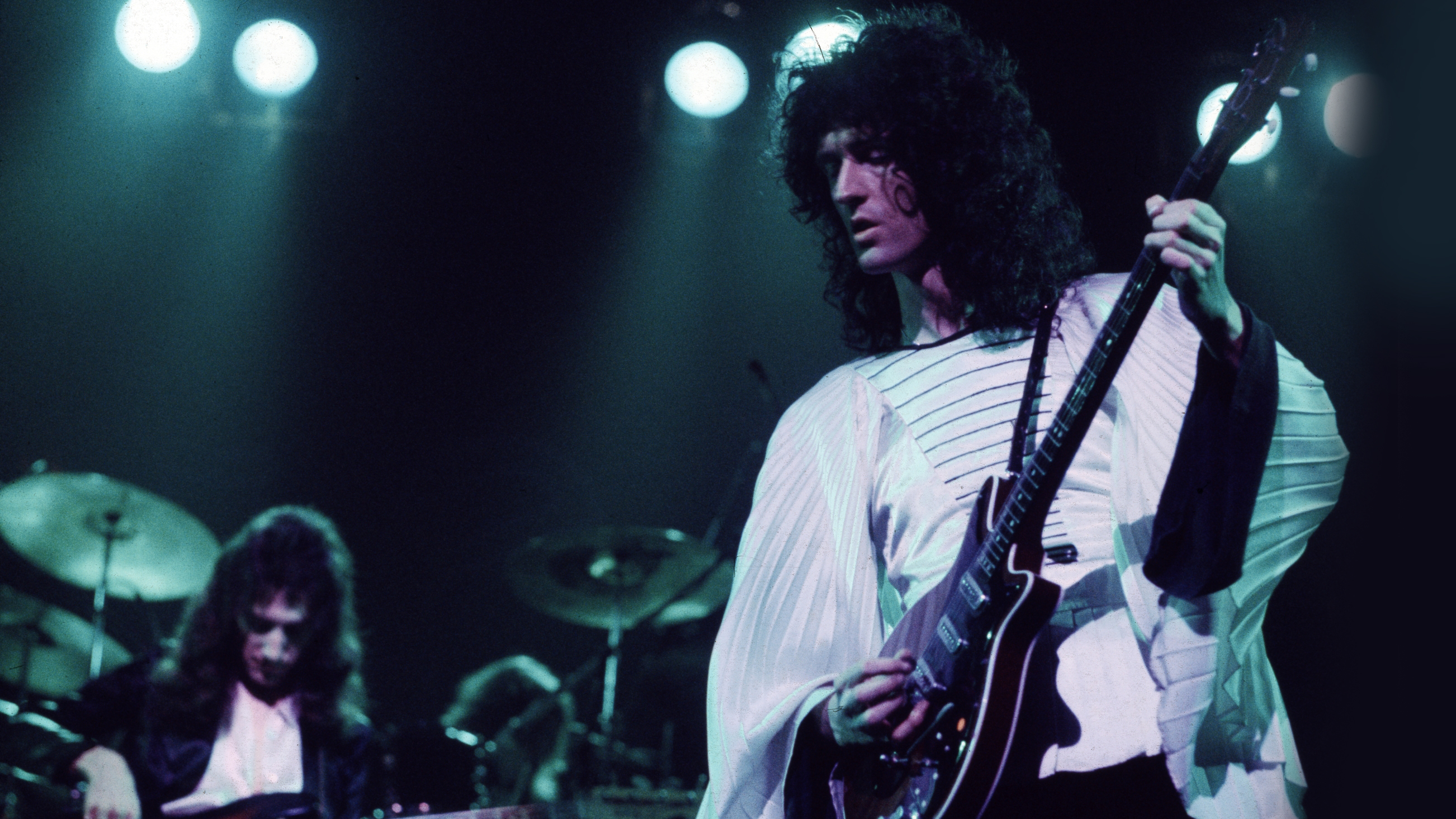
In a new interview with Vulture.com, Queen legend Brian May is reflecting on on his band's back catalogue with typical candidness, and when asked what he considers his personal guitar highlight on record he doesn't hesitate to focus in on the highlight of 1974's Sheer Heart Attack album.
"The first time I felt there was a shining moment on something was a song I didn’t organically fit into that well in the beginning," he admits. "That would be “Killer Queen. I was ill in the hospital when the band started laying it down. They had already recorded some harmonies for it and some chorus vocals. I felt they were very harsh, and it didn’t quite fit the song. So Freddie said, 'That’s okay, darling. We’ll do it again when you come out. We’ll scrub it all, and we’ll start again,' which they did. We started singing the harmonies — and again, realized this was a monumental song."
It was when May started to piece together the guitar arrangement for Freddie Mercury's song that things went to a whole new level. May was emerging as a guitar hero with Queen, but one who seemed to bring a whole new approach to the way the instrument was used and perceived in rock.
"I got into this business of using the guitar as an orchestral instrument," he notes. "It was always part of my dream. But it happened more and more as time went on. The solo for Killer Queen is a three-part thing. I don’t think anyone else had ever attempted something like that.
I love the business of adding instruments in and building up harmonies
"There’s three parts not just paralleling each other in harmony, but, as a counterpoint, working off each other," describes the newly-knighted guitarist. "There’s this little bell effect, which I stole from a traditional jazz group called the Temperance Seven. That’s something in my DNA. I love the business of adding instruments in and building up harmonies.
"So it came out of my head, and I was able to translate it into the guitar very quickly in the studio, even though it’s fairly complex. For the first time, I had a real exposition of the way I wanted guitars to work. I could take things to the next level of the guitar — not just being something you could play or put a harmony line on. It could be a place where you’re treating the guitar like Glenn Miller would treat his brass, by giving each a voice and a chance to express itself."
Each of those parts is played with my kind of passion
Tonally it's a signature moment too, and we included it our rundown of 25 landmark guitar tones – the short room delay and hot-rodded Vox AC30 goodness is the fire at the heart of May's visionary composition.
"Each of those parts is played with my kind of passion, and it all fits together," he tells Vulture. "I love that track. I think it’s a perfect example of my guitar playing. It’s not wildly exciting and heavy and explosive, but it fits the song really nicely. I love that song as a work of art. I think it’s one of Freddie’s masterpieces. It’s a triumph of having lots of stuff in it but having lots of space, which is hard to do. It’s like a painting. Imagine a Baroque painting. Everything has its space and can be enjoyed in an uncluttered kind of way."
Read the full interview at Vulture.com







